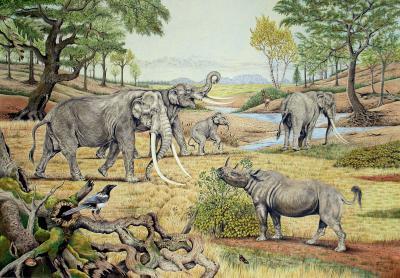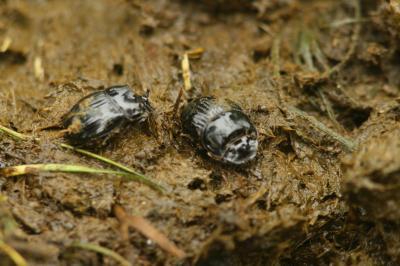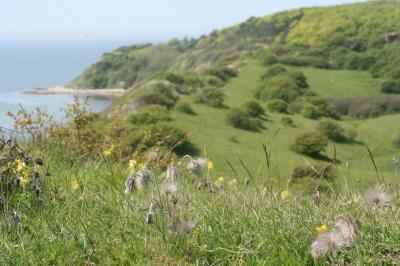Researchers from Denmark demonstrate in a study that the large grazers and browsers of the past created a mosaic of varied landscapes consisting of closed and semi-closed forests and parkland. The study will be published on Monday 3 March 2014 in the renowned journal PNAS (Proceedings of the National Academy of Sciences of the United States of America).
Dung beetles recount the nature of the past
The biologists behind the new research findings synthesized decades of studies on fossil beetles, focusing on beetles associated with the dung of large animals in the past or with woodlands and trees. Their findings reveal that dung beetles were much more frequent in the previous interglacial period (from 132,000 to 110,000 years ago) compared with the early Holocene (the present interglacial period, before agriculture, from 10,000 to 5,000 years ago).

This is a reconstruction of a Last Interglacial temperate landscape (Germany) with typical Late Pleistocene European large herbivores such as the now extinctstraight-tusked elephant (Elephas antiquus), an extinct rhinoceros (Stephanorhinus kirchbergensis), as well as the still common roe deer (Capreolus capreolus).
(Photo Credit: Illustrator: Elke Gröning.)
"One of the surprising results is that woodland beetles were much less dominant in the previous interglacial period than in the early Holocene, which shows that temperate ecosystems consisted not just of dense forest as often assumed, but rather a mosaic of forest and parkland," says postdoctoral fellow Chris Sandom.
"Large animals in high numbers were an integral part of nature in prehistoric times. The composition of the beetles in the fossil sites tells us that the proportion and number of the wild large animals declined after the appearance of modern man. As a result of this, the countryside developed into predominantly dense forest that was first cleared when humans began to use the land for agriculture," explains Professor Jens-Christian Svenning.
Bring back the large animals to Europe

Dung beetles are associated with sun-exposed, dung-rich habitats that are well represented in interglacial beetle assemblages. Examples are Copris lunaris (A) and Onthophagus vacca (B), with (C) their modern habitat (Røsnæs, Denmark).
(Photo Credit: Photographs by Morten D.D. Hansen)
If people want to restore self-managing varied landscapes, they can draw on the knowledge provided by the new study about the composition of natural ecosystems in the past.
"An important way to create more self-managing ecosystems with a high level of biodiversity is to make room for large herbivores in the European landscape – and possibly reintroduce animals such as wild cattle, bison and even elephants. They would create and maintain a varied vegetation in temperate ecosystems, and thereby ensure the basis for a high level of biodiversity," says senior scientist Rasmus Ejrnæs.

Dung beetles are associated with sun-exposed, dung-rich habitats that are well represented in interglacial beetle assemblages. Examples are Copris lunaris (A) with (C) their modern habitat (Røsnæs, Denmark).
(Photo Credit: Photographs by Morten D.D. Hansen)
Source: Aarhus University